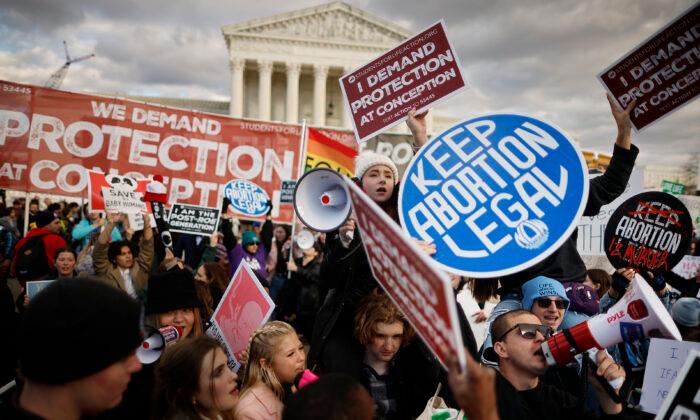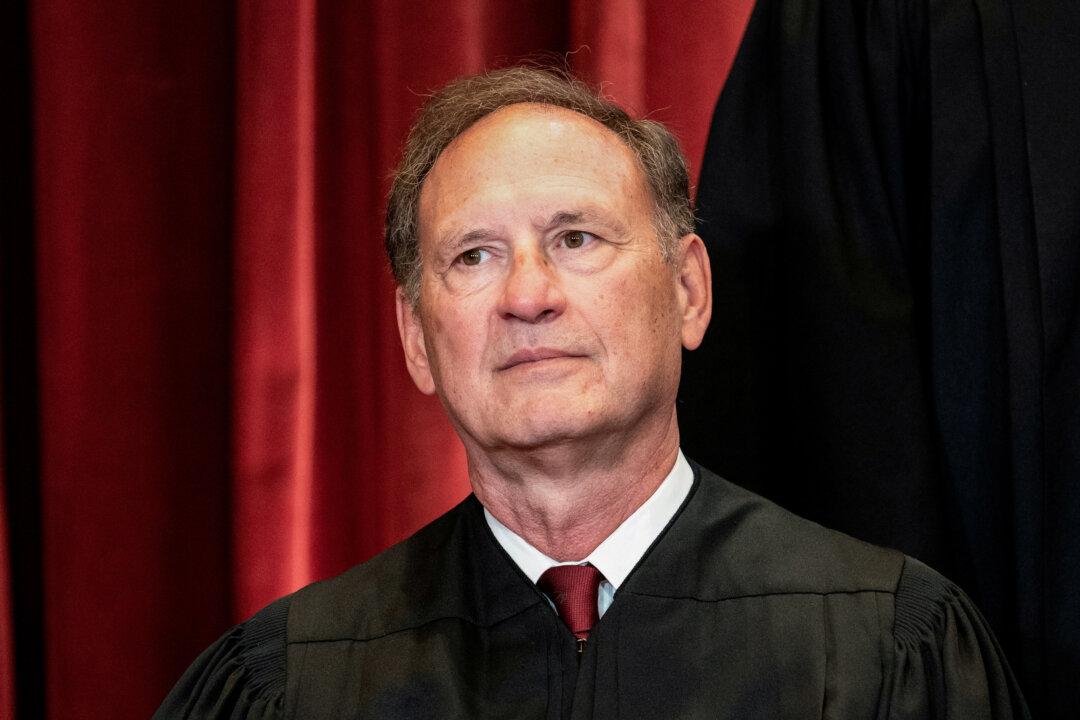The Supreme Court is asking Congress for a $12 million funding boost in the coming fiscal year to enhance security at the court building and better protect the nine justices.
The funding request comes months after a year-end report by Chief Justice John Roberts stated that the personal security of judges across the country needs to be a priority. As chief justice of the United States, Roberts both presides over the Supreme Court and oversees the entire federal judiciary.
“The law requires every judge to swear an oath to perform his or her work without fear or favor, but we must support judges by ensuring their safety,” Roberts wrote in the “2022 Year-End Report on the Federal Judiciary.”
“A judicial system cannot and should not live in fear,” he added at that time.
Security around the Supreme Court and the justices was boosted in May 2022 after a draft majority opinion in the ruling that later overturned Roe v. Wade was leaked, leading to raucous protests at the court and at the homes of justices. The identity of the leaker has never been revealed.
Left-wing groups loudly protested outside the homes of conservative justices in Maryland and Virginia. Supreme Court Marshal Gail Curley accused then-Maryland Gov. Larry Hogan (R) of not doing enough to protect the justices by not enforcing a state anti-residential picketing law. Officers from the U.S. Marshals Service were posted outside justices’ homes. Some activists posted bounties on Twitter offering information on the whereabouts of the justices so they could assemble flash mobs to harass them.
Authorities foiled a June 8, 2022, attempt to assassinate Justice Brett Kavanaugh at his Maryland home. Nicholas John Roske of California, who reportedly said he wanted to kill Kavanaugh to prevent him from voting to overturn abortion rights and gun control laws, entered a not guilty plea after a federal grand jury indicted him.
Hours after the Supreme Court overturned Roe v. Wade the same month, Mikeal Deshawn Archambault of Texas allegedly posted a threat on Twitter vowing to “kill everyone” at the court.
Even before the leak, the U.S. Marshals Service said in February 2022 that it was concerned about rising domestic extremism as federal judges were the target of more than 4,500 threats in the previous year. The son of federal Judge Esther Salas was murdered at the family residence in New Jersey in 2020.
Congress enacted a law last year to improve court security.
President Joe Biden signed the Supreme Court Police Parity Act into law on June 16, 2022. The measure gave Supreme Court officials, including Curley’s office, greater authority to protect the court, members of the justices’ immediate families, and other court employees.
The court requested an extra $5.9 million to “expand security activities conducted by Supreme Court Police to protect the Justices.”
The additional funding “would provide for contract positions, eventually transitioning to full-time employees, that will augment capabilities of the Supreme Court police force and allow it to accomplish its protective mission.”
Last year Congress approved $112 million in supplemental funding to “harden” courthouses across the nation.
The Epoch Times reached out to the Supreme Court’s public information office for comment on the funding request but had not received a reply as of press time.





